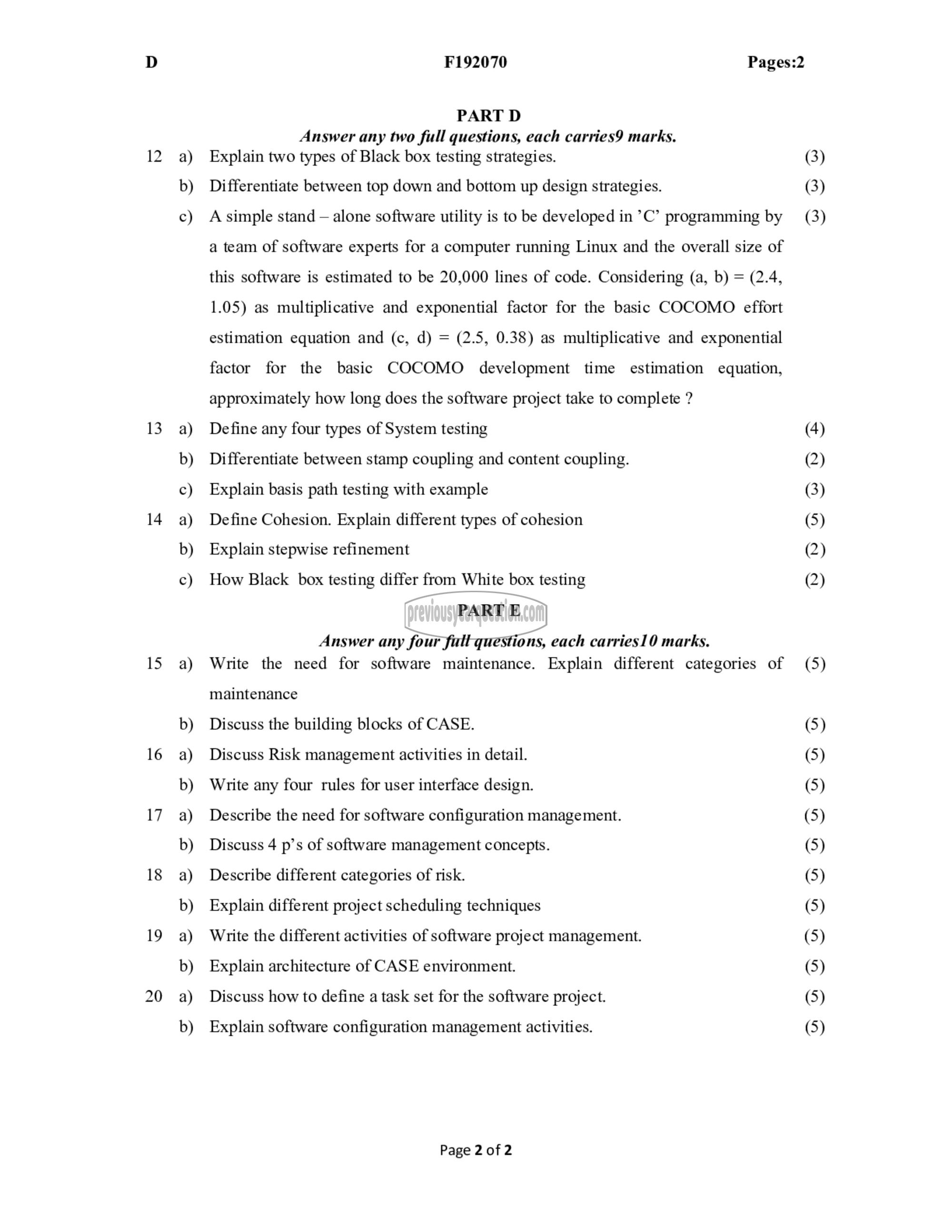APJ ABDUL KALAM TECHNOLOGICAL UNIVERSITY Previous Years Question Paper & Answer
Semester : SEMESTER 6
Year : 2019
Term : DECEMBER
Branch : COMPUTER SCIENCE AND ENGINEERING
Scheme : 2015 Full Time
Course Code : CS 308
Page:2
13
14
15
16
17
18
19
a)
b)
९)
a)
b)
c)
a)
b)
a)
b)
a)
b)
a)
b)
a)
b)
a)
b)
F192070
PART D
Answer any two full questions, each carries9 marks.
Explain two types of Black box testing strategies.
Differentiate between top down and bottom up design strategies.
Pages:2
A simple stand — alone software utility is to be developed in ’C’ programming by
a team of software experts for a computer running Linux and the overall size of
this software is estimated to be 20,000 lines of code. Considering (a, b) = (2.4,
1.05) as multiplicative and exponential factor for the basic COCOMO effort
estimation equation and (c, d) = (2.5, 0.38) as multiplicative and exponential
factor for the basic COCOMO development time estimation equation,
approximately how long does the software project take to complete ?
Define any four types of System testing
Differentiate between stamp coupling and content coupling.
Explain basis path testing with example
Define Cohesion. Explain different types of cohesion
Explain stepwise refinement
How Black box testing differ from White box testing
PART ந
Answer any four full questions, each carries10 marks.
Write the need for software maintenance. Explain different categories of
maintenance
Discuss the building blocks of CASE.
Discuss Risk management activities in detail.
Write any four rules for user interface design.
Describe the need for software configuration management.
Discuss 4 p’s of software management concepts.
Describe different categories of risk.
Explain different project scheduling techniques
Write the different activities of software project management.
Explain architecture of CASE environment.
Discuss how to define a task set for the software project.
Explain software configuration management activities.
Page 2 of 2
(3)
(3)
(3)
(4)
(2)
(3)
(5)
(2)
(2)
(5)
(5)
(5)
(5)
(5)
(5)
(5)
(5)
(5)
(5)
(5)
(5)
